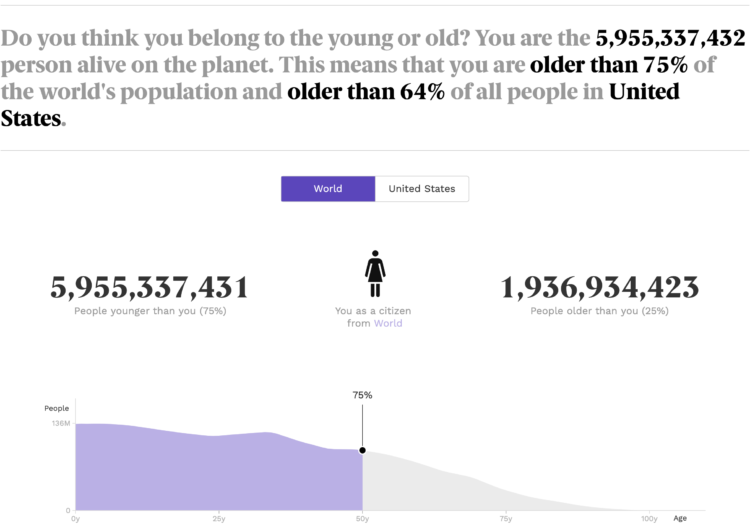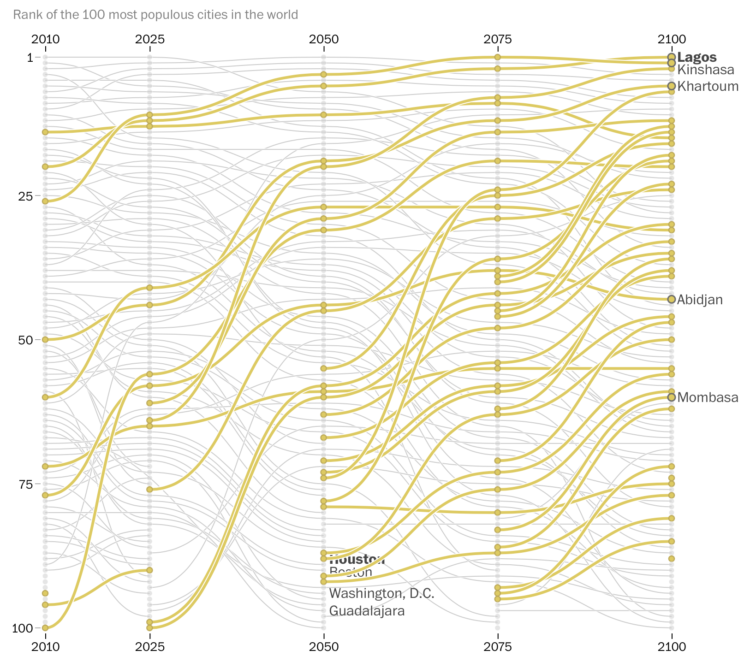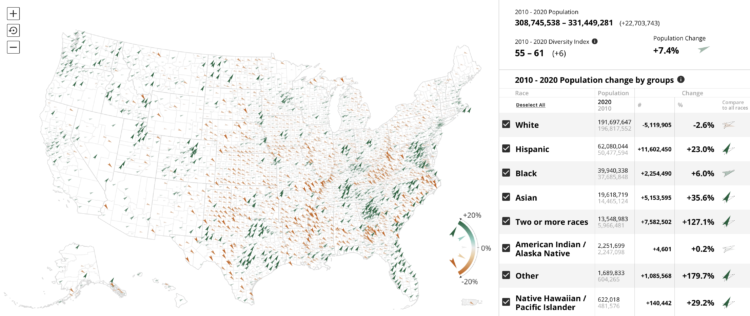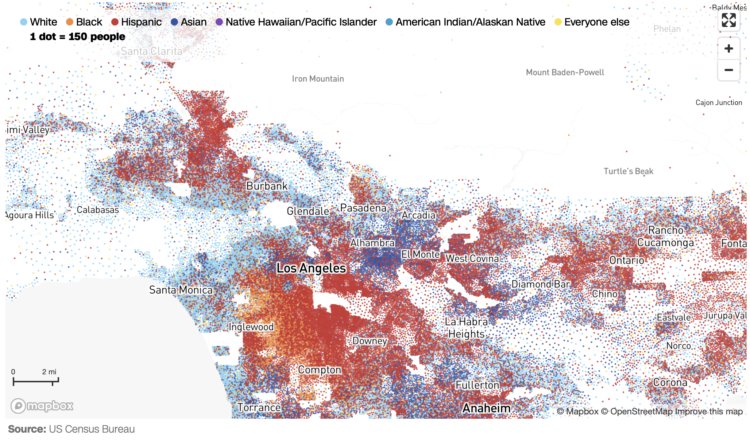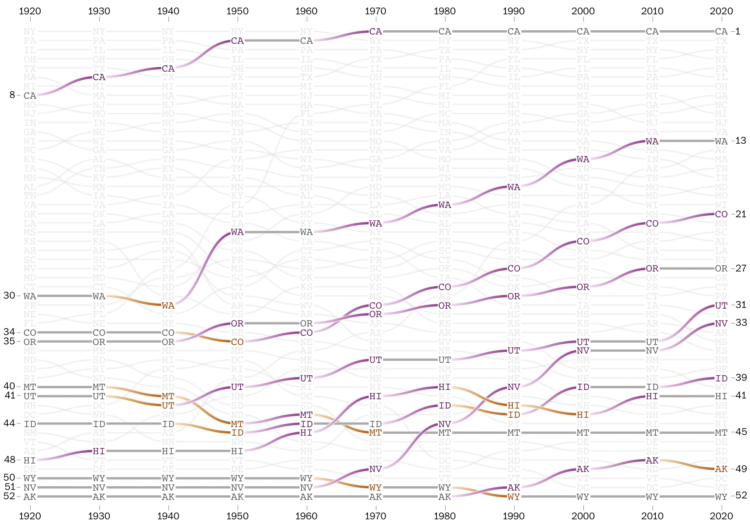Population.io by World Data Lab asks your birthday, country of residence, and gender. It spits out tidbits comparing your age to the rest of the world population, such as how old you are compared to others and how many people you might share a birthday with. Fun.
It also provides a few back-of-the-napkin calculations for life expectancy based on averages, with maybe a bit too much certainty for your expected date of death. For more uncertainty but more accuracy for what is known, see also this look at mortality.
Tags: age, population, World Data Lab
